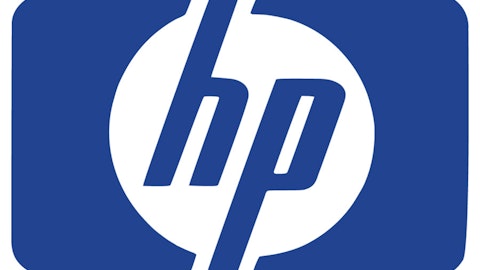There is no question that AT&T Inc. (NYSE:T) and Verizon Communications Inc. (NYSE:VZ) are rivals. I’ve written about both companies in the past, and honestly several times I’ve found Verizon to be a better growth story. I worked in the wireless industry for several years at one point, so I know behind the scenes the opportunities and challenges that face these companies. While AT&T’s current quarter still shows them lagging their main competitor in a few areas, there are two things the company clearly is doing better than Verizon.

For each of these carriers, the faster they can move away from landline and toward wireless, broadband, digital voice, video, and other services, the better. You can see the decline in landline usage by looking at AT&T’s wireline division. The company lost 4.8 million switched access lines in the last year, which was equivalent to a just over 13% decline. By comparison, CenturyLink showed a 5.8% year-over-year decline. Frontier actually slowed their rate of decline in customers to just 1.61% in their most recent quarter. Verizon’s decline was in the middle of the pack, with voice connections down 6.8% versus last year. With this big challenge of offsetting landline losses with other service gains, AT&T has struggled to match Verizon when it comes to their wireless growth.
If you compare AT&T Mobility’s results to Verizon Wireless, on nearly every metric Verizon comes out ahead. In their most recent quarters, Verizon added twice as many customers with 2.2 million versus 1.1 million at AT&T. Verizon also had a lower rate of churn at 0.95% versus 1.19% at AT&T. Verizon also trounced AT&T with a 24% operating margin versus 14.5% at AT&T. This has been a constant theme in the past, as Verizon has been pretty consistent in outperforming their rival. However, AT&T reversed course and actually beat Verizon on two very important metrics.
One thing that A&T did better in the last year was repurchase shares. Companies like CenturyLink and Frontier have both issued shares to pay for acquisitions, and must make these acquisitions pay off to avoid lower earnings. Verizon’s share count has actually increased by just less than 1% in the last year. By comparison, AT&T was busy buying back shares. In fact, over the last year, AT&T’s diluted share count is down about 4.6%. How was AT&T able to pay for these repurchases? Quite simply, they generated better cash flow growth.
In the telecommunication field, cash flow might be the most important metric. Since these companies all have significant depreciation allowances, their net income doesn’t tell the whole story. This leads us to the second way that AT&T beat Verizon in the last year; they generated better free cash flow growth. AT&T produced 34.70% more free cash flow in the last 12 months versus last year. Verizon by comparison, generated 13.11% more free cash flow. While both performances are good, AT&T’s outperformance was very important for shareholders. This greater free cash flow not only allowed for better share repurchases, but it improved the company’s dividend coverage as well.
Telecommunication stocks have long been bought for their yields. With CenturyLink paying a yield over 7%, and Frontier paying just under 9%, there is no question these payouts get a lot of attention. Both of these companies generate significant cash that helps them afford their payouts. In fact, CenturyLink’s free cash flow payout ratio is just 38.70%, and Frontier’s payout is down to 50.78%. Verizon’s yield of 4.75%, and AT&T’s yield of 5.21%, might not seem as attractive as the others; the difference is they both have huge and growing wireless divisions. CenturyLink and Frontier are in a race to replace landline losses with higher growth video and broadband services, but neither has a wireless presence. With Verizon’s payout ratio at just 34.16%, AT&T can’t match up with a ratio of 51.96%. However, AT&T proved over the last year that they could generate more free cash flow than their rival, and they could repurchase more shares. In the past, Verizon was the clear winner between the two, but if AT&T has another year like 2012, these roles could be reversed. Investors should keep an eye on both of these telecom titans, and you can do so by adding T and VZ to your personalized Watchlist today.
The article The 2 Things This Company Does Better Than Its Rival originally appeared on Fool.com and is written by Chad Henage.
Copyright © 1995 – 2013 The Motley Fool, LLC. All rights reserved. The Motley Fool has a disclosure policy.




